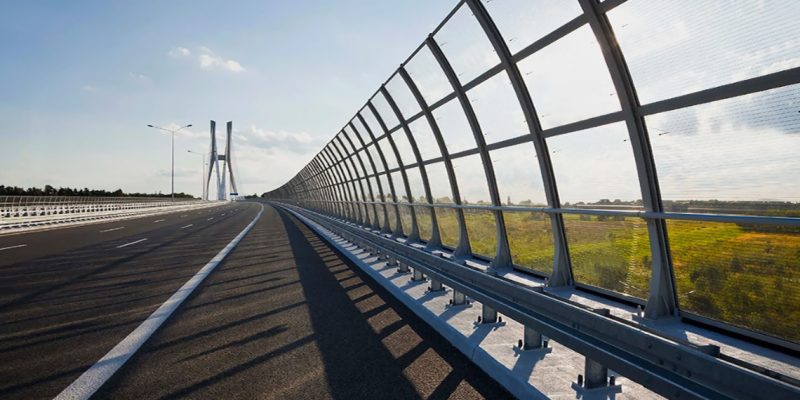If you live in Singapore, you know that noise pollution is a common problem in urban areas. Whether it’s the sound of traffic, construction work, or trains passing by, noise can have a significant impact on your health and well-being. Fortunately, noise barriers have been implemented in Singapore to help mitigate the effects of noise pollution.
Noise barriers are structures designed to reduce the amount of noise that reaches a certain area. They are typically made of materials that absorb sound, such as concrete, steel, or wood. In Singapore, noise barriers have been installed along highways, railways, and other areas where noise is a problem. These barriers are designed to reduce the amount of noise that reaches nearby residential areas, improving the quality of life for residents.
But how effective are these noise barriers? Do they make a difference in reducing noise pollution in Singapore’s urban areas?
The Impact of Noise Pollution on Urban Living
Living in a bustling city like Singapore can be exciting, but it also comes with its own set of challenges. One of the most significant challenges is noise pollution. Noise pollution is a growing concern in urban areas worldwide and can have a significant impact on your health and well-being.
Understanding Noise Levels and Health Risks
Noise pollution can be defined as any unwanted sound that is loud, unpleasant, or disruptive to daily life. The World Health Organization (WHO) has identified noise pollution as a significant public health issue, with prolonged exposure to loud noise levels leading to various health risks.
Prolonged exposure to high levels of noise can cause hearing loss, sleep disturbance, stress, cognitive impairment, and cardiovascular disease. According to WHO, exposure to noise levels above 70 decibels (dB) can lead to adverse health effects. For reference, normal conversation is around 60 dB, while heavy traffic can reach up to 85 dB.
Noise Issues in Singapore’s Residential Areas
In Singapore, noise pollution is a widespread issue, with residential areas being the most affected. The constant noise from traffic, construction, and other activities can lead to sleep disturbance, stress, and other health issues.
To combat this problem, the Singapore government has implemented various measures, including the installation of noise barriers. These barriers are designed to reduce the amount of noise that enters residential areas, making the environment more comfortable and peaceful.
Noise Barrier Solutions in Singapore
If you live in Singapore, you know how loud and chaotic the city can be. From bustling traffic to construction sites, noise pollution is a significant problem that affects the quality of life of residents. Fortunately, noise barriers have proven to be an effective solution to this issue.
Design and Materials of Sound Barriers
Noise barriers come in various designs and materials, ranging from high-density polyethylene barriers to specially designed-concrete barriers. These barriers are strategically placed along construction sites and major roads to absorb, reflect, and deflect sound waves, attenuating noise levels significantly.
Additionally, some noise barriers are designed to blend with green spaces, making them aesthetically pleasing and environmentally sustainable.
Effectiveness and Challenges
Noise barriers have been proven to be effective in reducing noise levels in Singapore’s urban areas. However, there are still some challenges that need to be addressed, such as the environmental impact of noise barriers on wildlife and the effectiveness of noise barriers in reducing low-frequency noise.
Innovative Approaches to Noise Mitigation
In recent years, there have been several technological innovations in noise mitigation in Singapore. For example, Hebei Jinbiao has developed noise barrier singapore products that incorporate monitoring systems to measure noise levels and adjust the barrier’s height and thickness accordingly.
Also, some architects are incorporating noise reduction measures into their architectural designs, such as sound-absorbing materials and double-glazed windows.
Government Regulations and Public Agencies
The Singaporean government has established a comprehensive regulatory framework to manage noise pollution in urban areas. The National Environment Agency (NEA) is the regulatory body responsible for enforcing noise pollution regulations. The NEA sets guidelines for noise levels in different areas and monitors compliance with these guidelines.
The Land Transport Authority (LTA) is another public agency that plays a key role in managing noise pollution. The LTA is responsible for regulating noise levels from road traffic, including the construction and operation of expressways and major roads. The LTA has implemented various measures to reduce noise levels, such as installing noise barriers along major roads and MRT tracks.
The Role of Community in Urban Planning
Community engagement is an important aspect of urban planning in Singapore. The government actively seeks input from residents and stakeholders to ensure that urban spaces are designed to meet the needs of the community. The NEA and LTA work closely with residents to identify noise pollution hotspots and develop solutions to address these issues.
In addition, the government encourages community involvement in the design and implementation of noise barriers. For example, the NEA has partnered with community groups to design noise barriers that are aesthetically pleasing and integrated into the surrounding environment.
Overall, the Singaporean government’s regulatory framework and community engagement initiatives demonstrate a commitment to creating sustainable and livable urban environments. Integrating noise barriers into urban design and actively engaging with the community, the government is working to improve the quality of life for residents while ensuring public health and safety.













Comments